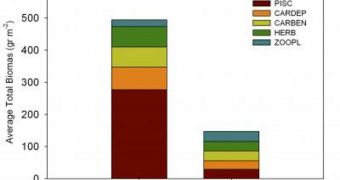The Gulf of California was once one of the most varied and diverse aquatic regions in the entire world, featuring a wide array of species living together in balance. But that was some time ago. At this point, the destructive fishing practice and other human activities are causing untold damage on the collection of species living here. Extensive fishing has all but depleted fish stocks, and has turned the Gulf into a shadow of its former self. Once called the “world's aquarium,” the region is now a collection of partially destroyed ecosystems. But the good news is that not all is lost, experts now say, PhysOrg reports
These depleted regions can once again be brought back to life, experts believe, if a host of habitat-conservation and -protection programs are set in place as fast as possible. Scientists from the University of California in San Diego's (UCSD) Scripps Institution of Oceanography, led by expert Octavio Aburto-Oropeza, say that this is the only way to ensure that the Gulf does not turn into a wasteland. The team presented its findings at the annual meeting of the American Association for the Advancement of Science (AAAS), which was held in San Diego.
Experts at the Institution have recently launched a new initiative called the Gulf of California Program, which aims to identify the most severe threats to the ecosystems, and to propose solutions for removing them. One such method is called hookah, and it relies on using crude oxygen piping during the night, when the fish are resting. This allows the fishermen to collect important amounts of fish and invertebrates, without discerning between the two.
“In these studies, whether reefs or mangroves, we are trying to show that the destruction on the coast and overexploitation in other areas are diminishing the biomass (the amount of organisms in an ecosystem) in several areas. With lower biomass, the large predators, the keys to a robust marine ecosystem, are missing and that causes disruption down the marine food web,” Aburto-Oropeza says. He adds that a large number of small marine areas that have been protected for at least ten years are showing massive signs of recovery, and that they all feature a healthy level of fish and plant populations.
“Different sites recover in different ways, but they all have increased in biomass, especially top predators. The common thing is that they have reduced or eliminated fishing activity,” he concludes.

 14 DAY TRIAL //
14 DAY TRIAL //